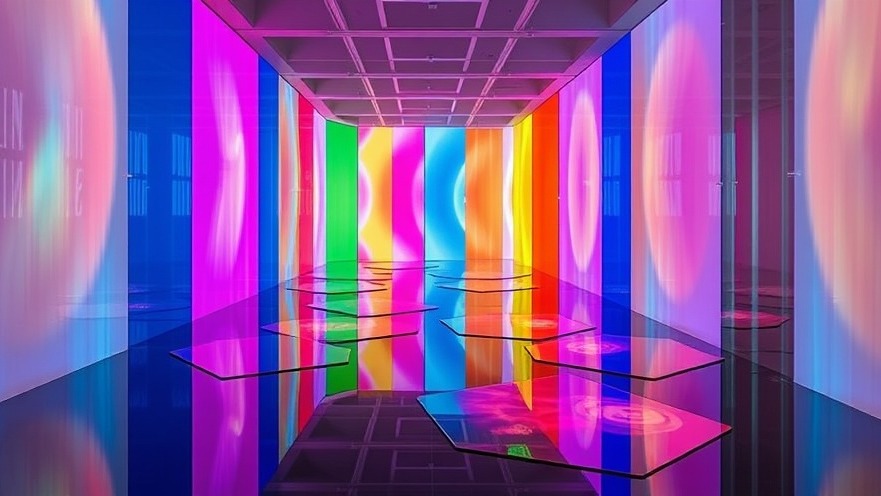
The Intersection of Design and Functionality
The installation by Milan-based design studio 6:AM at the Piscina Cozzi pool house during Milan's Design Week exemplifies how creative spaces can redefine our understanding of functionality, especially for digital nomads. The exhibition, titled Two Fold Silence, immerses visitors in a space adorned with Murano glass objects strategically placed among unfinished shower stalls. This installation not only offers aesthetic appeal but also positions itself as a reminder of the functional importance of space in our workplaces.
Creating Comfortable Workspaces with Artistic Flair
For remote workers, the idea of a workspace goes beyond a traditional desk and chair setup. It reflects personal style and comfort that boost productivity. The playful use of lighting, like the Quadrato wall lamp and the unique Aldo light, not only illuminates the space but also inspires creativity. Digital nomads can draw from this exhibition's design philosophy by incorporating statement pieces into their workspaces. Lighting that combines art and functionality could elevate their remote work experience, making it both comfortable and visually stimulating.
Responding to Space Rather Than Defining It
The essence of 6:AM's approach is their statement: "the venue defined the installation." This principle is crucial for creating ergonomic workspaces. Just as the designers reacted to the unfinished nature of the Piscina Cozzi's basement, remote workers can benefit from adapting their setups to the unique shapes and available areas in their environments. This adaptability fosters productivity and creativity, making a workspace not just a place to work but a dynamic environment that evolves with the user's needs.
The Power of Incompleteness in Design
Thematically, 6:AM's installation reflects on incompleteness as a narrative. By showcasing pieces that are still in progress, they embrace a sense of evolution—something that resonates deeply with digital nomads who often juggle multiple projects at once. Allowing workspaces to evolve over time can alleviate the pressure of perfection. As remote workers embrace this philosophy, they can cultivate environments that foster growth and adaptability, much like the pieces in the installation.
Bridging Art and Ergonomics
6:AM's work highlights the potential of integrating art into everyday use without sacrificing ergonomics. The blend of aesthetic appeal and practical functionality in their designs underscores the importance of stray from purely utilitarian objects. For digital nomads, incorporating ergonomic elements—such as adjustable desks and supportive seating—while also engaging with artistic decor can lead to an improved work-life balance. It’s about surrounding oneself with items that inspire while promoting physical health.
Embracing Minimalism in Workflow
The minimalist approach by 6:AM reminds remote workers of the power of simplicity in design. In crowded workspaces where information overload can lead to stress, minimalism enables focus and clarity. By selecting fewer but more meaningful items, digital nomads can reduce distractions. This can be achieved by choosing decor that resonates personally and enhances comfort while maintaining a streamlined work environment.
Conclusion: Transform Your Workspace Inspired by Art
Through the lens of 6:AM's Two Fold Silence exhibition, digital nomads can gather inspiration not just from the artwork itself but from the overall philosophy that informs it. It's a call to engage with our environments in meaningful ways, to adapt art and ergonomics into one cohesive workspace. By reflecting on the principles of incompleteness, responsiveness to space, and minimalistic elegance, remote workers can transform their work environments into productive sanctuaries.
Let art inspire your workspace! Consider how integrating functional yet artistic pieces can enhance your productivity and creativity. With thoughtful adaptations, your environment can become a true reflection of your work style and preferences.
 Add Row
Add Row  Add
Add 




Write A Comment